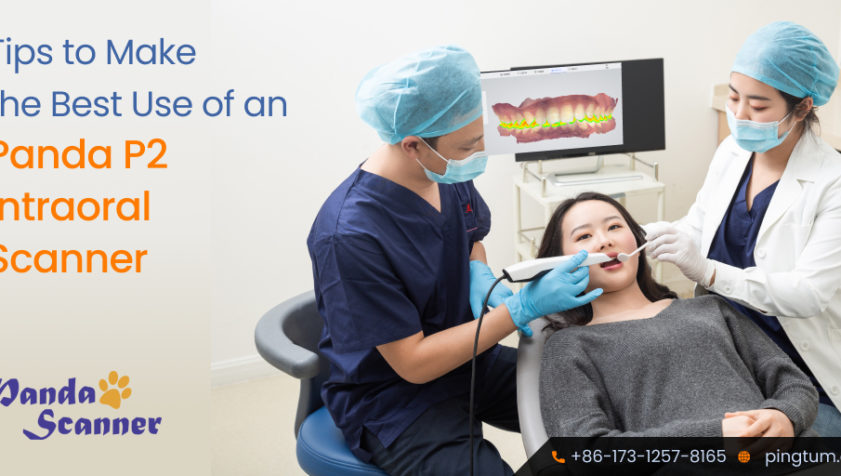Dentistry has been pushed into the digital era with the introduction of the intraoral scanner. A dental scanner can work as a great visualization tool for the dentist to view the innards of a patient’s buccal cavity. The clarity and precision it provides in terms of images are way ahead of the ones provided by traditional scanning. The scanner offers plenty of advantages to both dentists and dental technicians in prescribing and speeding up the development of restorative solutions. For the patient, the IO scanner like the Panda P2 scanner can mean a better experience and an exciting educational journey. If you are one of the dentists who is yet to switch to digital dentistry, the time is ripe to do so. With one stroke you can move into the big league of technology-driven diagnosis and treatment. The biggest benefit would be an increased patient footfall given that the patient does not have to go through the unpleasant experience of traditional scanning.
What is an intraoral scanner?
An intraoral scanner is an advanced digital device that generates images of the teeth and gums of the patient’s buccal cavity and then transmits them to a chairside monitor for viewing. The images are processed by CAD software and displayed on the monitor in real-time. Dentists can view the images in great detail and arrive at a proper diagnosis without having to wait for the X-ray results a la traditional scanning. The scanner uses a laser or an optical source to scan the teeth and gums thereby eliminating any risk from radiation. An intraoral scanner creates realistic 3D scans in quick time, which are then relayed to the touchscreen to be viewed by the dentist and patient. Once the scan is over, the dentist can send the image files to the dental laboratory to develop restorative solutions using 3D additive technology.
Since dental scanners are state-of-the-art, it is important to know about them to get the best results. These are technique sensitive and need a practice of some sort. Let us understand how you can get the best out of an intraoral scanner.

Tips to utilize the intraoral scanner
Any gadget needs to be mastered to derive its optimal benefits and dental scanners are no different. The tips to utilize them are mentioned below:
Begin slowly: For first-time users, it is crucial to understand that there is a learning curve to using the device. It can take some time in the initial phase to know about the device and its associated software system. So, gradually begin its application and find out its use for different indications. Contact the technical support team to address any issue or clear doubts about the device. It is better to practice with a known person or a model instead of a patient who visits your clinic. Once you have mastered the technology, then you can use it to scan the buccal cavities of your patients and surprise them.
Know the features and scan strategy: Remember, the accuracy of impressions is underpinned on the scan strategy recommended by the manufacturer. Each brand of IO scanner comes with its features and scanning technique, which need to be learned at first before putting the device to actual use. For instance, the Panda P2 scanner to be used in areas of restoration, implantation, and orthodontics, has a ‘staring’ scanning technology and an intelligent thermal management system.
Keep the scan area dry: Controlling moisture is important to get the best results from an intraoral scanner. The moisture can result from saliva, mucus, or even blood creating a reflection of sorts, which can alter or distort the final image. So, it is important to clean the mouth of the patient to get accurate impressions. Also, attention should be paid to the interproximal areas to derive the optimum outcome.
Conclusion
Intraoral scanners can be real value additions to your dental clinic. They can streamline your dental workflow, deliver quality, and speed up the diagnosis and treatment process. However, the devices should be gradually incorporated into the workflow. It is only after dentists know the technology and usability of an intraoral scanner that they can move ahead with their application in real-time.






